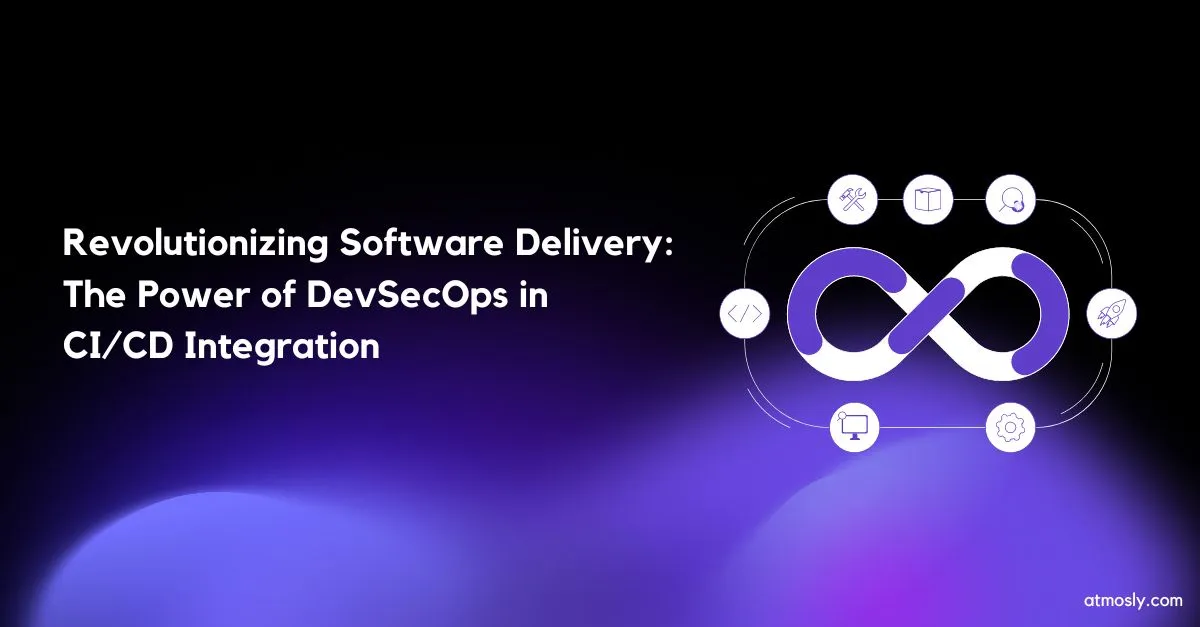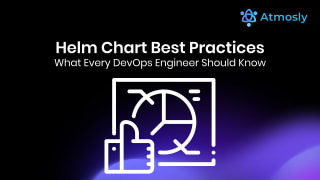The way softwares and applications are developed has changed rapidly in the last one decade. This change will continue at a fast pace with the development of Artificial intelligence and machine learning ( AI/ML ) which will revolutionize the current decade of how applications are developed and shipped. Nonetheless everyone needs speed to ship changes from local system to production faster and this gives rise to Security & Vulnerabilities being shipped together. This is where the approach of DevSecOps which enables teams to put security checks within the pipelines to automate the assessments helps keep the system secure.
This transformation is not just theoretical but is reflected in market trends as well. According to a MarketsandMarkets report, the DevSecOps market, valued at $1.5 billion in 2020, is projected to grow to $5.9 billion by 2025, with a Compound Annual Growth Rate (CAGR) of 31.2%. This surge is attributed to the growing demand for secure software development and the constant need for faster software delivery. In this context, this article delves into the evolution of software delivery, the challenges encountered, and how DevSecOps & CI/CD integrated within Atmosly for deploying applications is redefining the standards for modern software delivery, emphasizing speed, efficiency, and security.

DevSecOps and CI/CD
Understanding DevSecOps and CI/CD
Before diving into CI/CD integrated DevSecOps, it's crucial to establish a solid understanding of these transformative practices.

DevSecOps: DevSecOps represents a profound cultural shift more than just a buzzword. It advocates for the infusion of security into every facet of the software development lifecycle. This stands in stark contrast to traditional development practices where security was often an afterthought. DevSecOps demands a cultural transformation, urging everyone involved, from developers to operators, to take ownership of security. Its core pillars are automation, collaboration, and a continuous feedback loop, with the relentless identification and mitigation of security issues from the inception of the development process.

CI/CD: CI/CD, which stands for Continuous Integration and Continuous Delivery, is the linchpin of modern software delivery or core of DevOps. Continuous Integration focuses on the consistent merging of code changes into a shared repository, automatically triggering builds and tests. Continuous Delivery takes it a step further, ensuring that code changes are consistently deployable and ready for on-demand release. The primary objective is to eliminate the notorious it works on my machine issue, identify integration problems early, and streamline the deployment process.
Challenges of Software Delivery without DevSecOps and CI/CD
In the era before DevSecOps and CI/CD integration, software delivery changes were like learning a new programming language which can take months . Developers worked in isolation, collaboration was scarce, and the integration of disconnected code resembled a chaotic patchwork. Testing and security checks were labor-intensive, manual tasks, consuming precious time and introducing the potential for errors. This period gave rise to three enduring issues:

Delayed Releases: Manual integration and testing procedures acted as sluggish bottlenecks, causing significant delays in software delivery, and threatening an organization's competitive edge.

Security Vulnerabilities: Security was often an afterthought, confined to the later stages of development, resulting in costly patches and an imminent risk of data breaches.

High Costs: Post-release maintenance became a financial burden, necessitating reactive responses to security and performance issues.
An Analogy: The Smart Assembly Line of Modern Software Delivery
Without DevSecOps Integrated CI/CD
Imagine being the manager of a traditional manual assembly line in a factory, responsible for building high-tech gadgets. Your factory, much like traditional software delivery methods, faces several challenges:

Isolated Workstations: Each workstation represents a distinct production phase, such as design, assembly, and quality control. Unfortunately, these workstations often operate in isolation, mirroring the siloed operations of development, testing, and deployment teams in traditional software delivery.

Manual Handovers: At the end of each workstation, workers manually pass the partially assembled gadget to the next phase. This process is time-consuming and prone to errors, similar to how traditional software delivery relies on manual code handoffs between teams.

Post-Production Inspections: Most inspections and quality checks occur after the gadget is fully assembled, increasing the chances of identifying issues late in the process. This parallels how traditional software development often leaves security checks until late in the cycle.

Costly Recalls: Discovering defects or issues late in the assembly line often necessitates recalling a substantial number of products and incurring costly retroactive fixes. Traditional software delivery faces analogous challenges, with post-release security vulnerabilities and expensive patching.
The Synergy of DevSecOps and CI/CD
DevSecOps integrates security practices within the traditional DevOps framework, ensuring that security is a core aspect of the software development lifecycle rather than an afterthought. This approach emphasizes continuous security, where security measures are baked into every stage of software development, from planning to deployment and maintenance.
CI/CD (Continuous Integration/Continuous Delivery), meanwhile, focuses on automating the stages of software development, specifically code integration, testing, and deployment. The primary goal here is to enable frequent and reliable software updates with minimal manual intervention.
When DevSecOps and CI/CD are combined, they create a powerful framework for software development. This union ensures that:
- Automation is at the forefront, streamlining both the development process (through CI/CD) and security measures (through DevSecOps).
- Collaboration between development, operations, and security teams is enhanced, leading to a more cohesive and efficient development process.
- Continuous Feedback is integrated into the process, allowing for rapid identification and correction of both functional and security issues.
- Reliability and Security are not mutually exclusive but are integrated, ensuring that rapid deployments do not compromise security.
- Cost-effectiveness is achieved by reducing the need for extensive manual testing and late-stage security fixes, which can be expensive and time-consuming.
The Significance of DevSecOps Culture & Atmosly’s role
DevSecOps isn't just about tools; it signifies a cultural transformation that requires active participation from every software professional. Security isn't a phase; it's a fundamental element of every decision, from code creation to deployment. Neglecting this cultural shift exposes organizations to security breaches and inefficiencies. This is where Atmosly comes into play, offering a state-of-the-art platform that makes DevSecOps flexible, easy to manage, and highly efficient. Atmosly Integrates different tools prominently used in industry to help build secure pipelines and provides the flexibility to teams to choose the right tools for them depending upon their application needs.
Let’s Look at the The Smart Assembly Line of Modern Software Delivery With Integrated DevSecOps & Atmosly in picture
- Collaborative Robotics: In this new assembly line, collaborative robots operate seamlessly between workstations, symbolizing the collaborative culture of DevSecOps. They communicate and share information, much like development, security, and operations teams working together as a unified, high-performance unit.
- Automated Conveyors: Instead of manual handovers, automated conveyors smoothly transfer gadgets between workstations. This automated handover process resembles CI/CD, ensuring that code changes flow efficiently through the development pipeline, minimizing manual errors and delays.
- Real-time Quality Checks: Smart sensors at each workstation continuously monitor and conduct quality checks during assembly, detecting issues as they occur. This mirrors how DevSecOps integrates security and quality checks throughout the software development process, preventing vulnerabilities from progressing.
- Immediate Corrections: If a defect is detected, the system automatically addresses it in real time. This immediate correction capability aligns with the CI/CD approach, where code issues are identified and rectified early in the pipeline, reducing the cost of fixing problems later.
- Efficiency and Cost Savings: With this smart assembly line, your factory produces gadgets at an unprecedented speed, with minimal defects and rework. In the realm of software delivery, DevSecOps and integrated CI/CD accelerate software development, significantly reducing time-to-market, cost overruns, and security risks.
Atmosly's Role in the Smart Assembly Line
Consider Atmosly as the central control system that orchestrates this smart assembly line, enabling even faster, more secure, and highly automated software delivery and deployment:
Instant Monitoring and Optimization: While some DevSecOps tools offer instant monitoring and optimization, managing them can become increasingly challenging. Atmosly serves as the nexus for these tools, offering flexibility, agility, speed, and efficient software delivery, all in one hub.
Zero Defects: Instead of grappling with the management of various DevSecOps tools, leading to deficits and inefficiencies, Atmosly takes charge of overseeing these tools, allowing users to focus on decision-making. With Atmosly, users can expect fewer or no defects in their software delivery practices, making DevSecOps as efficient, fast, secure, and automated as possible.
Rapid Deliveries: Just as gadgets roll out swiftly on the smart assembly line, software releases mirror this pace. DevSecOps is a culture that enhances the efficiency, robustness, and security of development and operations, enabling rapid deliveries. Atmosly further accelerates this by providing a hub or toolkit that contains a comprehensive set of tools for various DevSecOps use cases, making CI/CD, infrastructure provisioning, containerization, and more easier, faster, more secure, and efficient.
Atmosly's Pivotal Role in Fostering DevSecOps Within Integrated CI/CD Pipelines

Traditionally, integrating security tools into CI/CD pipelines has been a complex and time-consuming endeavor. This often led to security vulnerabilities being identified late in the development cycle, requiring costly rework and delays. Atmosly emerges as a game-changer, simplifying this integration by embracing the Shift-Left approach. In simpler terms, it brings security testing and analysis earlier into the development process, rather than waiting until the final stages. This proactive approach empowers developers to catch and fix security issues early on, streamlining the DevSecOps workflow and bolstering the overall security posture of your applications.
Let’s look at how Atmosly achieve this :
Automated Workflows for Enhanced Productivity
With Atmosly, teams can create automated workflows that are tailored to their specific needs for deployments catering to different environments and services. The platform facilitates an end-to-end automated workflow to build pipeline, from the initial code source to the final deployment, including critical security checks via tools like SonarQube for code quality and security vulnerabilities.
Ease of Integration:
Atmosly integrates easily with your existing version control system to provide continuous integration and deployment support along with application health. This highlighted flexibility of ease of integration to choice of security tools as per the environments helps meet the scalability needs of different project sizes and complexities.
CD with Diverse Deployment Strategies
While the one size fits all approach rarely applies, Atmosly empowers diverse deployment methodologies. Whether you favor blue-green deployments for seamless rollouts, canary deployments for cautious testing, or rolling updates. This flexibility empowers you to tailor your CD process as per your organization standard and what fit’s best for your use-case. Overall it paves the way for faster & secure deployment.
Conclusion
DevSecOps with Integrated CI/CD isn't merely a glimpse into the future; it's at the forefront of modern software delivery. It's the key to unlocking secure, efficient, and cost-effective application delivery. Atmosly stands at the vanguard of this transformative journey, offering a comprehensive platform that seamlessly integrates with a diverse range of development environments. It's time to empower your development teams, bolster your security posture, and supercharge your software delivery with Atmosly. Step boldly into the brave new world of software development, with Atmosly leading the way. Your journey begins today. Explore the potential of Atmosly and embark on the path to the future of software delivery.






